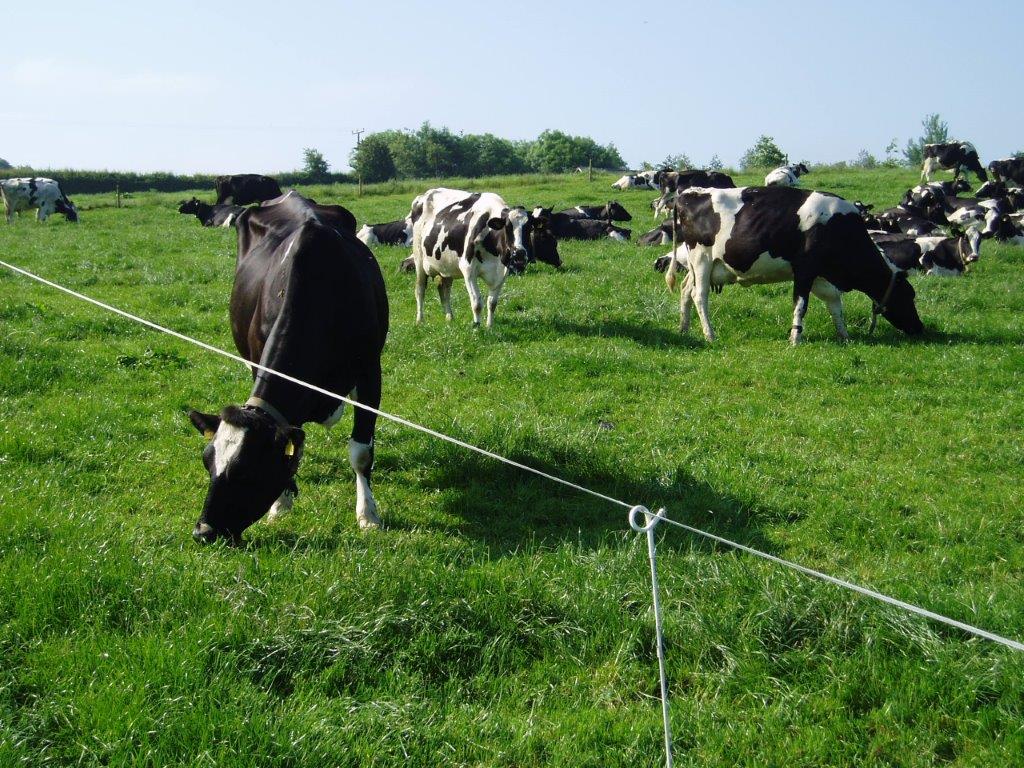Tightening the Calving Pattern in the CAFRE Dairy Herd
June 16, 2020
College of Agriculture, Food and Rural Enterprise (CAFRE) Dairying Technologist Stephen Gilkinson, discusses the CAFRE Greenmount Dairy Herd. Stephen says “the Dairy Herd fulfils two main roles: student training and demonstration of best management practice to dairy farmers through knowledge and technology transfer”.
Cows in the CAFRE Dairy Herd have traditionally calved from the last few days of August right through the winter into late spring, with about two thirds of the herd calved by Christmas and the rest spread over the next 4 months. While this has helped spread milk production through the year, it is not ideal from a management perspective, as there are usually cows in early lactation, late lactation and dry cows all at the same time, complicating herd management.

CAFRE cows grazing at Greenmount Dairy Centre
Advantages of a tighter calving pattern include having a much higher percentage of cows calving in the autumn, which means that the majority of cows can go to grass settled in calf and are easier to manage to achieve good milk production from grazed grass during the main grazing season. Cows will also start to dry off from early August onwards, as grass growth is declining but a considerable proportion will still be grazing in late summer and early autumn to utilise late season grass. Previously cows had been starting to be dried off from early July, which meant that for these cows, the proportion of fresh grass in their diet was very limited. Delaying start of calving to the end of September will increase the amount of grazed grass in the diet and help to increase the milk from forage figures. The tighter autumn and early winter calving pattern will also allow CAFRE to take advantage of milk price seasonality bonuses. In addition, replacement heifer rearing to first calving at 2 years of age will also be made easier with heifers batched within narrower age ranges.
In recent years CAFRE staff with veterinary assistance from Firmount Veterinary Practice have been working to tighten the calving pattern, by delaying the start of calving from late August to late September, increasing the proportion of cows calving before January and ending the breeding season earlier each summer. The progress made to date is outlined in Table 1 below.
Table 1. The proportion of animals calving in autumn and spring for the CAFRE herd over the past 5 years and the projected calvings for the 20/21 season
| Year | Calving Sep to 31st Dec (%) | Calving 1st Jan on (%) |
| 2015/16 | 68% | 32% |
| 2016/17 | 69% | 31% |
| 2017/18 | 72% | 28% |
| 2018/19 | 78% | 22% |
| 2019/20 | 80% | 20% |
| 2020/21 (projected) | 92% | 8% |
The progress made to date in tightening up the calving pattern has been achieved through the fertility management programme applied within the CAFRE dairy herd which includes:
- Breeding heifers from sires selected for strongly positive daughter fertility
- Veterinary examination of cows before the start of the breeding season
- Efficient heat detection by staff with first service submission rates typically of 90%
- Use of heat detection aids to assist with heat detection
- Weekly veterinary pregnancy diagnosis visits during the breeding season
- Regular condition scoring of the herd
- Closely monitoring and reviewing herd nutrition with feed suppliers
The CAFRE dairy herd fertility management programme is an example of good herd management teamwork which will be explored in more detail in future press articles, and will be found here and through CAFRE Development Advisors working with Business Development Groups.
